Martyrs to the Unspeakable: The Assassinations of JFK, Malcolm, MLK, and RFK
REVIEWS, 3 Nov 2025
Elizabeth Woodworth | Integrate - TRANSCEND Media Service
Martyrs to the Unspeakable: The Assassinations of JFK, Malcolm, Martin, and RFK
by James W. Douglass
A Review
27 Oct 2025 – Why has the public lost so many of its cherished humanitarian leaders to assassination?
Bringing new research to light, this gripping book is a gift to our needed understanding of this phenomenon.
An expansive and insightful masterpiece, it is surely destined to become a classic.
Drawn from recently declassified government documents, from hundreds of books and articles spanning time, from the author’s incredible interviews, and from historic videotapes, this work is an unprecedented contribution to our understanding of the forces that obliterated four inspired American leaders in the 1960’s. These forces still prevail.
This book is not a light read.
Backed by extensive research, it uncovers just how the forces of hope and trust for a peaceful world have been overcome by the forces of darkness, war generation, and propaganda.
Its sweeping searchlight illuminates these covert forces, bringing them out of the shadows to reveal how they destroyed the four great peace leaders of the 1960s.
After following their entrenched CIA careers, we are then introduced to the team of “mechanics” they recruited from the criminal underworld to actually pull the triggers.
One might ask, why should we take time away from our busy and engaging lives to dive into this grim reality?
Because we pay an enormous price for not doing so: The public’s elected choices for candidates who best represent their values for a world of peace and equality will never come to fruition unless internal treasonous forces are exposed and conquered.
This is a monumental work. It is the clearest depiction of the source and root of a betrayed U.S. democracy that I have ever seen, or could even have imagined. It should make us sadder but wiser human beings. The only thing it requires in response to its painstaking work is our courage and vigilance as citizens to face the “unspeakable” and triumph over it with a true democracy that serves common human goodness.
This review will look at the four lamentable assassinations through the lens of saving democracy in America.
-/-/-/-/-/-/-/-
I was only 17 years old in November 1960 when the election of John F. Kennedy swept the country like a breath of fresh air. JFK was challenging all Americans to give themselves to their country so that it might master new heights.
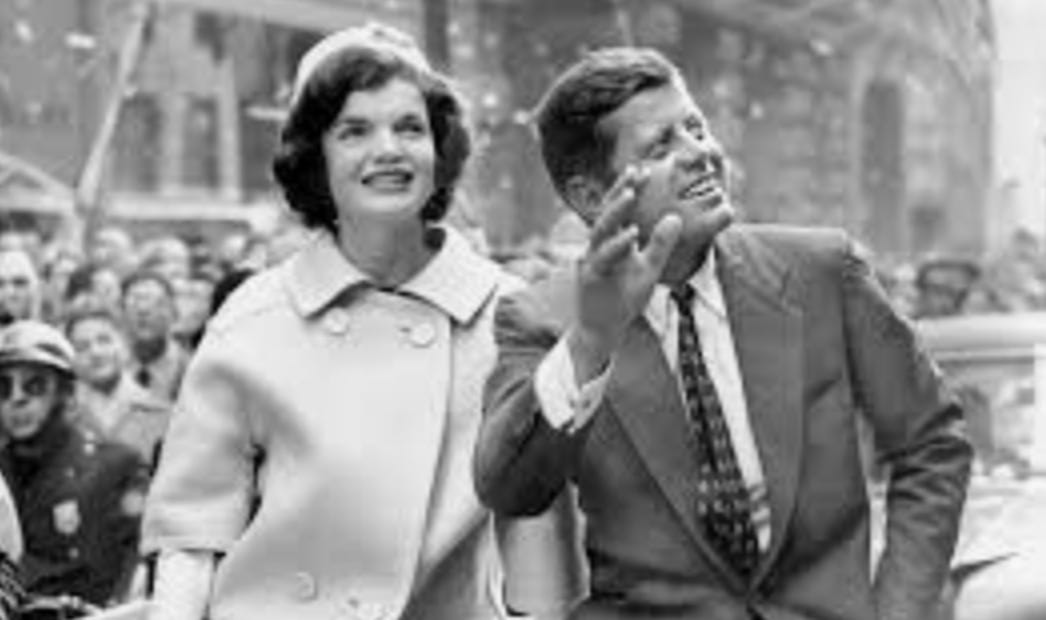
The staid and predictable politics of 1950’s conformity were overtaken as optimism and excitement gripped the nation – but this immense promise was suddenly shattered in Dallas, Texas, on November 22, 1963, when Kennedy’s policies for world peace threatened “the Unspeakable,” which murdered him.
What is the Unspeakable?
Author James W. Douglass titled his extraordinary 2010 book, “JFK and the Unspeakable” using a term that was coined by Trappist monk Thomas Merton: “The Unspeakable’ refers to “an evil whose depth and deceit go beyond the capacity of words to describe.” [1]

Academy-award winning film director Oliver Stone called this acclaimed book “the best account I have read of this tragedy and its significance.”
In his new 2025 book, “Martyrs to the Unspeakable,” Douglass is transfixed by the advance of the Unspeakable since the 1960’s.
In the Introduction he
“provides the story of “how a century of fear, embodied in four national-security-state murders, has led to our time of ultimate terror. The assassinations of our leaders were carried out by unspeakably violent, covert means. They were developed by a military-industrial complex, whose profits have depended on constant warfare that seems destined to result ultimately in a nuclear holocaust and nuclear winter.… Unless we turn, step-by-step to a more just and peaceful world with the courage and grace of our martyrs, re-creating a real movement for change, our story will soon end.”
His concern is well justified, given that several nuclear non-proliferation and disarmament treaties have been cancelled in recent years.[2]
JFK and RFK on the Non-proliferation of Nuclear Weapons
When JFK was elected President in 1960, the world was only 15 years out from the U.S. atomic bombings of Hiroshima and Nagasaki, yet nations were clamouring to build nuclear arsenals. Douglass explains his concern:
“On the Fourth July 1963, President Kennedy was asserting ironically the independence, and opposition of his US government to the state of Israel on its way to the acquisition of its own extinction weapon (in imitation of the United States). Kennedy’s nonproliferation commitment included the progressive disarmament of his own government, in step, he hoped and planned, with the other nuclear powers. That made JFK persona non grata to a circle of those favouring international nuclear complicity. Their criminality spanned the world from Cold War Washington to the next most likely nation to embrace ‘a nuclear option,’ Israel.” (Douglass, p. 40).
“To stop the proliferation of nuclear weapons nations before it led to a war of human extinction, Kennedy had to begin with his nearest ally. Israel’s bomb had to be stopped.” (Douglass, p. 48).
Robert F Kennedy took a similar stance on nuclear weapons when he stood up to give his signature Senate statement on June 23, 1965, three years before his own assassination:
“‘I rise today to urge action on the most vital issue now facing this nation and the world. This issue is not in the headlines… it is the question of nuclear proliferation… five nations now have the capacity to explode nuclear bombs…’ Senator Kennedy also urged that all reactors built for peaceful atomic energy should be subject to IAEA [International Atomic Energy Agency] inspection to ensure they are not used for the production of weapons grade material.” (Douglass, p. 61).
How were the Kennedy brothers assassinated?
Nuclear non-proliferation was but one of many peace and social justice initiatives the brothers led, not only during JFK’s presidency while RFK was Attorney-General, but while RFK was Senator, and later when he was presidential nominee.
These initiatives – too many to include in this review – were not aligned with the security state bureaucracy. One powerful figure opposed to the Kennedy plans played a key coordinating role in their assassinations: With close ties to Israel, the paranoid, obsessive alcoholic James Jesus Angleton had been installed by Allen Dulles as Chief of CIA Counter-Intelligence in 1954, where he remained until his forced retirement in 1974.
Douglass observes:
“The heads of U.S. and Israeli intelligence knew James Angleton had the covert, compartmentalized capacity to deal with the security problems the Kennedys posed. To kill a president or a president-to-be required an unspeakable power at the core of an agency of unaccountable power.” (p. 62).
“James Angleton demonstrated his ability to abort the birth of a better world by helping to murder John Kennedy. His chessboard movement of operative Lee Harvey Oswald from Moscow to Dallas as the JFK scapegoat established a norm in assassination planning. Five years later his counterintelligence team’s steering of James Earl Ray around the world – from Memphis to Toronto, then over to Portugal and England, where Ray would finally be arrested in London as the Memphis scenarios scapegoat [in the murder of Martin Luther King] – would confirm Angleton’s power.” (pp. 63-64).
Angleton’s treasonous fingerprints were also on the mind-control of scapegoat Sirhan Sirhan in the murder of Robert F. Kennedy in 1968, freeing Israel from the threat of a non-proliferation president with a concern for dispossessed people.
Malcolm X
The clarity of purpose, power, and personality of Malcolm X are shown in a panel interview conducted in 1963,[3] showing his potential to “electrify Black people unused to hearing their thoughts about white dominance expressed in public. Malcolm X and the Nation of Islam provoked fierce discussions across the country. He was bringing a repressed Black rage at white supremacy to the surface, challenging the country to come to terms with racism but at a rising risk to his own safety.” (Douglass, p. 120).
Malcolm was a man of dramatic confrontations, as seen in September 1960, when he allied himself with Premier Fidel Castro and his Cuban delegation to the United Nations in New York. Upon Castro’s arrival, Eisenhower’s State Department restricted his travel, and the midtown Shelbourne Hotel tried to charge his delegation a $20,000 security fee.
Malcolm then stepped in, inviting Castro’s delegation to stay at the famous old Hotel Teresa in the heart of Harlem – a move that thrilled the 2,000 brown New Yorkers waiting in the rain outside the hotel for Castro to arrive.

Malcolm’s welcome to Castro and his ostracized delegation was a unique demonstration of solidarity between Harlem and the Cuban Revolution. But in thus “dancing with the Unspeakable,” Malcolm was writing his own death warrant.
The famous photo on the cover of this book shows the only time that Malcolm X and MLK ever met, which was at the nation’s Capitol. This famous photo was seen as representing “the two great streams of black consciousness that flourished in the 1960’s and beyond.”
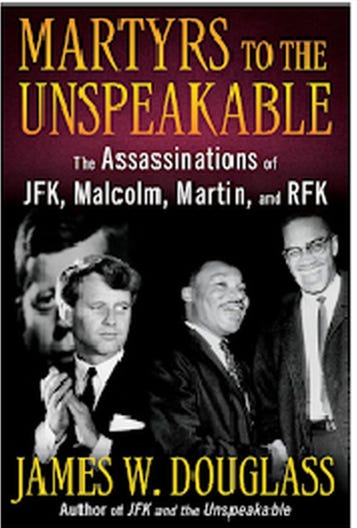
Bringing the streams together, however, was that MLK was now pushing for more massive and disruptive civil disobedience, while Malcolm was adding human rights to his former emphasis on violence. “For [FBI director J. Edgar] Hoover,” Douglass notes, “[President] Johnson, and their national security state, dependent on division for domination, Malcolm and Martin seen in harmony were like prisoners on death row, dead men walking.” (Douglass, p. 271).
Martin Luther King, Jr.
On December 8, 1999, 31 years after Martin Luther King was assassinated on April 4, 1968, his wife Coretta Scott King addressed the press conference of a trial conducted in the Circuit Court of Judge James E. Swearengen of Shelby County Tennessee.
After three and a half weeks of testimony from 72 witnesses, six black and six white jurors ruled that Dr. King was murdered by a conspiracy that included agencies of his own government. Douglass explains:
“Dr. King and President Kennedy were uneasy allies in a struggle against forces they eventually saw as a threat to the continuation of human life on planet earth. Their lives, and millions of others, were converging in a movement for life itself that was not without cost….”
King and Kennedy were both on a journey into an unspeakable truth, which they had the courage to identify. They each gave an impassioned signature speech against total war that would become a reason for their assassinations.” (pp. 158-59).
J. Edgar Hoover, for decades the strongly anti-Communist FBI head, worked hard to discredit MLK as a fraud, moral scoundrel, and anti-communist, urging the Negro population to select a national civil rights leader of “proper direction”.
Neutralizing King included the FBI faking King’s signature on FBI lab-produced fake stationery, and alleging to the nation’s top newspaper that King was subject to Communist infiltration in the civil rights movement.
The Bureau followed up by illegally installing hidden microphones in 14 of King’s hotel and motel rooms, creating 19 reels of surveillance tape. A whole chapter of this book is peppered with underhanded propaganda actions taken by Hoover.
King knew the FBI was trying to break him.
Part Two: The Way
The “Way” of MLK
Part Two of this book contains chapters on “the way” towards assassination travelled by each of the four fated leaders.
Regarding MLK, Douglass writes that Beyond Vietnam was “the most transforming speech of Dr. Martin Luther King’s life.” King declared that “the war in Vietnam is but a symptom of a far deeper malady within the American spirit,” now adding Vietnam to his concerns about nuclear war and the Poor People’s Campaign to abolish poverty.
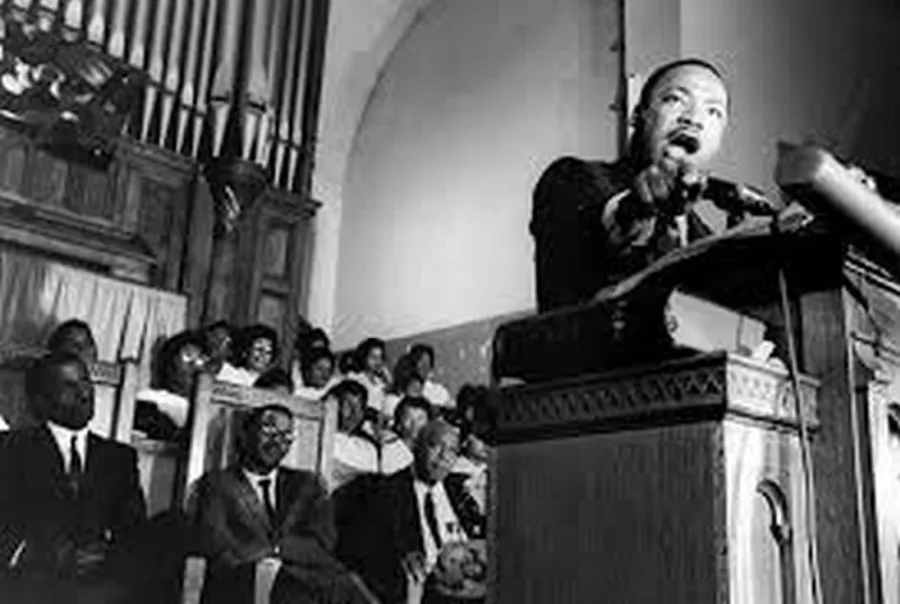
Martin Luther King, April 4, 1967, “Beyond Vietnam” speech. From: https://www.gothamcenter.org/blog/to-build-a-mature-society-the-lasting-legacy-of-martin-luther-king-jrs-beyond-vietnam-speech
In his final 12 months King tried to initiate what he called “a revolution of values” – beyond civil rights, beyond racism, beyond all war, “to confront the warfare system directly with massive nonviolent direct action in the nation’s capitol, to turn around an economic system that prospers from war on the other side of the globe, systemic poverty everywhere, and domestic division between the impoverished blacks and whites. He denounced the corporate profiteering from weapons that rained terror on the world. He recognized there could be no peace unless the warfare economy could be deconstructed and freed from the total military industrial hold on it for the sake of serving instead the people working in the factories and the fields: “A nation that continues year after year to spend more money on military defence than on programs of social uplift is approaching spiritual death.” (Douglass, pp. 306-07).
At the height of the 1967-1968 national fury over Vietnam, Dr. King’s stated plan was to bring the Poor People’s Campaign to Washington with the goal of “igniting a spiritual chain reaction across cities, countrysides and continents to abolish poverty.”
A poor people’s march of thousands to invade and paralyze Washington raised great anxiety in the White House and Washington. FBI director J. Edward Hoover had long been a close friend of President Lyndon Johnson, both obsessive anti-Communists. Hoover described King to the President as a communist-controlled traitor.
The national security state would do anything to extinguish the traitor’s vision of a new America before he could take in the people. In order to prevent “the rise of a Messiah,” King “had to be killed” by government forces. (Douglass, p. 314).
How did they do it?
“Thanks to a woman who fled the deepest shadows and broke their silence, we can now follow a key player in the plot to kill King.” (Douglass, p. 316).
Her incredible discovery became known when Douglass attended the three-week King assassination trial in 1997, where he met and personally interviewed the courageous Glenda Gabrow, whom he met in the courtroom.
Her 12-page interview is a pivotal point in the book.

Gabrow, during her adolescence in Houston, had regularly encountered a man called Raul, who was always leisurely hanging out with friends in front of a gas station she passed on her way to school. He was nice to her and they became friends. At times, including her socially with his team, he would boast about killing MLK.
Chillingly, he also claimed to have been in the Texas School Book Depository in Dallas when President Kennedy had been killed five years earlier – thus providing “a crucial bridge between the MLK and JFK murders.”
The Gabrow interview rings true. From it we learn of a man who turned out to be one of the “mechanics” the government keeps in the shadows to perform covert executions of national security threats such as MLK.
We also learn the related story of Jack Ruby, killer of President Kennedy’s assassination scapegoat Lee Harvey Oswald – who Gabrow had met as well.
The “Way” of Senator Robert F. Kennedy
This absorbing chapter alternates between RFK’s steadfast resistance to the Vietnam war, and the 1969 trial of RFK’s alleged killer, Palestinian youth Sirhan Sirhan.
It is of compelling interest that following RFK’s June 5, 1968 shooting in Los Angeles, there were high-level courtroom attempts to derail the ballistics findings of the meticulous Los Angelos Coroner, Dr Thomas Noguchi.
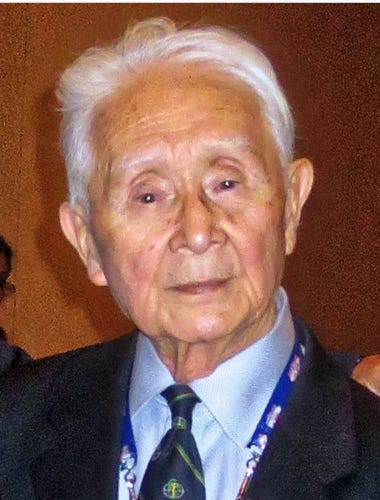
Noguchi’s painstaking testimony established that RFK had been shot in the mastoid process behind his right ear at a range of three inches – which should have exonerated Sirhan of murdering him from the front. Fifty-seven years later, Sirhan, age 81, is still in prison. In spite of a 2021 parole board recommendation that he be released, it was mysteriously reversed by the Governor of California.
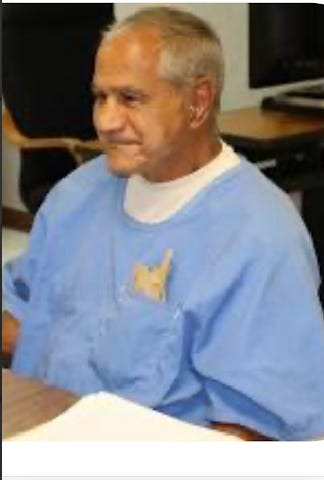
It is generally unknown that in Europe there were ethical discussions between Senator Robert Kennedy and French President Charles de Gaulle over the U.S. right to fight Communism in another people’s country (Vietnam), against that people’s will. Both distinguished men were viewed contemptuously by CIA director Allen Dulles for being enemies of the Cold War.
Part Three: The Why
Part Three is an absorbing assortment of incidents about the four leaders that are not commonly known, including discussion between President Kennedy and his insubordinate General Curtis LeMay, who during the Cuban Missile Crisis believed that he could win a nuclear war with Russia.
However, it was the Kennedy brothers’ empathy with their opponent Nikita Kruschev, and Kruschev’s reciprocal willingness to trust JFK’s promise not to invade Cuba, that were in fact the keys to the resolution of the Missile Crisis in the very nick of time.” (Douglass, p. 529).

James Douglass has been investigating the four assassinations over the past six decades, learning why the systemic evil of our own system has carried out the murders:
“I believe a key to this untold story is the fact that our government was the first to develop and use nuclear weapons. The democratic principles we profess were, from the beginning, in total conflict with such weapons, and our reluctance to submit them to international inspection, control, and abolition. By going in the opposite direction, we destroyed what democracy we had…
The rise of our national security state after World War II, as justified by the Cold War that our nuclear weapons created, was the effective end of democracy in this country. It was climaxed by the execution of President Kennedy, which foreshadowed the state killings of Malcolm X and Martin Luther King, Jr., together with Robert F. Kennedy.
Those executions and their cover-ups were a destruction of democracy for every generation of Americans since then and a catastrophe for the world. The ultimate climax of our nation’s history, unless we turn around, will be the extinction of the life of humanity and a vast number of other creatures on Earth through nuclear omnicide.” (p. 457).
Douglass devotes his intense opposition to this advancing course of extinction to a vastly needed and long overdue “movement for life.”
The Impact of this Book
The disastrous course of the military-industrial complex that emerged in the 1960’s has vastly accelerated since four great peace-makers sacrificed their lives to reverse its momentum.
The spirit of intensity in this unusual book marks the final bid of an outstanding author to shift the war system of our increasingly violent planet towards peace.
The impact of this masterwork is unique in my experience.
NOTES:
“The effect of the void, the matrix of the unspeakable, is a colossal destructiveness brought about by a spiritual vacuum, into which violence, like lightning, can and will enter. It does so, Merton added, because of a desire for release from the despair and impotence many feel in response to the void in which they exist.” Ross Labrie, “Thomas Merton on the Unspeakable,” Merton Center, p. 2, 2011 (https://merton.org/ITMS/Seasonal/seasonal2011.aspx).
[2] The Intermediate-Range Nuclear Forces (INF) Treaty; the New Start Treaty, the Comprehensive Nuclear-Test-Ban Treaty, and the Open Skies Treaty.
[3] “Panel Interview of Malcolm X,” 1963
____________________________________________________
Elizabeth Woodworth is a retired medical librarian and author.
Tags: JFK, MLK, Malcolm X, Reviews, Thomas Merton, USA
DISCLAIMER: The statements, views and opinions expressed in pieces republished here are solely those of the authors and do not necessarily represent those of TMS. In accordance with title 17 U.S.C. section 107, this material is distributed without profit to those who have expressed a prior interest in receiving the included information for research and educational purposes. TMS has no affiliation whatsoever with the originator of this article nor is TMS endorsed or sponsored by the originator. “GO TO ORIGINAL” links are provided as a convenience to our readers and allow for verification of authenticity. However, as originating pages are often updated by their originating host sites, the versions posted may not match the versions our readers view when clicking the “GO TO ORIGINAL” links. This site contains copyrighted material the use of which has not always been specifically authorized by the copyright owner. We are making such material available in our efforts to advance understanding of environmental, political, human rights, economic, democracy, scientific, and social justice issues, etc. We believe this constitutes a ‘fair use’ of any such copyrighted material as provided for in section 107 of the US Copyright Law. In accordance with Title 17 U.S.C. Section 107, the material on this site is distributed without profit to those who have expressed a prior interest in receiving the included information for research and educational purposes. For more information go to: http://www.law.cornell.edu/uscode/17/107.shtml. If you wish to use copyrighted material from this site for purposes of your own that go beyond ‘fair use’, you must obtain permission from the copyright owner.
Join the discussion!
We welcome debate and dissent, but personal — ad hominem — attacks (on authors, other users or any individual), abuse and defamatory language will not be tolerated. Nor will we tolerate attempts to deliberately disrupt discussions. We aim to maintain an inviting space to focus on intelligent interactions and debates.